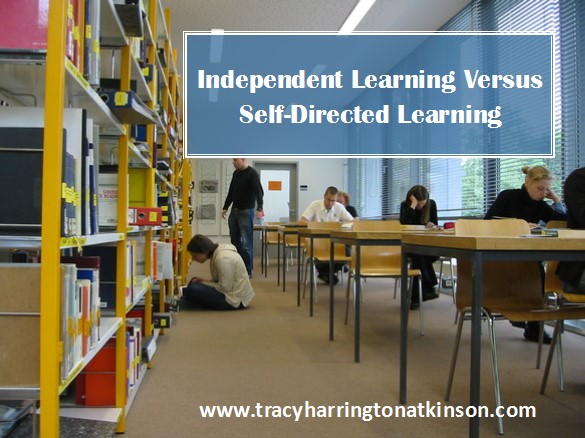 Independent Learning versus Self-directed Learning
Independent Learning versus Self-directed Learning
by Tracy Harrington-Atkinson
The question consistently arises when comparing and contrasting independent learning and self-directed learning. While several experts (de Beaufort, 2016; Livingston, 2012) promote independent learning and self-directed learning as synonyms, others (Knowles, 1975; Skiff, 2009) emphatically implore educators and scholars to succinctly differentiate terms in order to develop and understand the learning process associated with each label. Yet, the purpose in delineating between these idioms is to establish a common foundation for further discussion and development of the characteristics or attributes of these self-directed learners.
Malcom Knowles who coined the term self-directed learners (1975) favors self-directed learning as a stand alone term with no synonyms in accordance with the established definition of learning being that learning is an act which requires interdependence (O’Doherty, 2006). Knowles expounds on this foundation:
“Self-directed learning describes a process in which individuals take the initiative, with or without the help of others, in diagnosing their learning needs, formulating learning goals, identifying human and material resources for learning, choosing and implementing appropriate learning strategies, and evaluating learning outcomes” (p18).
Knowles continues his description by clarifying additional labels which have been inaccurately associated with the self-directed learning process. He states that these terms such as “self-planning learning, inquiry method, independent learning, self-education, self-instruction, self-teaching, self-study and autonomous learning” (p18) are strongly related to the learner acquiring knowledge in isolation. These terms are many times associated with programs where students may assimilate information in a pre-prescribed manner as demonstrated by independent learning courses where the student receives an approved recipe for learning with little guidance or feedback. In contrast, self-directed learning is a guided experience which includes feedback from guides, teachers, mentors, tutors and additional human interactions.
Sources:
De Beaufort, L. (2016). Developing learner autonomy: Factors affecting students’ satisfaction an independent learning module. Retrieved from http://www.academia.edu/9478814/DEVELOPING_LEARNER_AUTONOMY_FACTORS_AFFECTING_STUDENTS_SATISFACTION_WITH_AN_INDEPENDENT_LEARNING_MODULE
Knowles, M. (1975). Self-directed Learning: A Guide for Learners and Teachers. Pearson Learning Group: Parsippany, New Jersey.
Livingston, K. (2012). Independent learning. Encyclopedia of the Sciences of Learning, 1526-1529.
O’Doherty, M. (2006). Definitions of independent learning. Learn Higher. The University of Manchester. Retrieved from http://archive.learnhigher.ac.uk/resources/files/Independant%20Learning/Independent_Learning%5B1%5D.pdf
By Tracy Harrington-Atkinson
Tracy Harrington-Atkinson, mother of six, lives in the Midwest with her husband. She is a teacher, having taught elementary school to higher education, holding degrees in elementary education, a master’s in higher education and continued on to a PhD in curriculum design. She has published several titles, including Calais: The Annals of the Hidden, Rachel’s 8 and Securing Your Tent. She is currently working on a non-fiction text exploring the attributes of self-directed learners: The Five Characteristics of Self-directed Learners.

Comments are closed